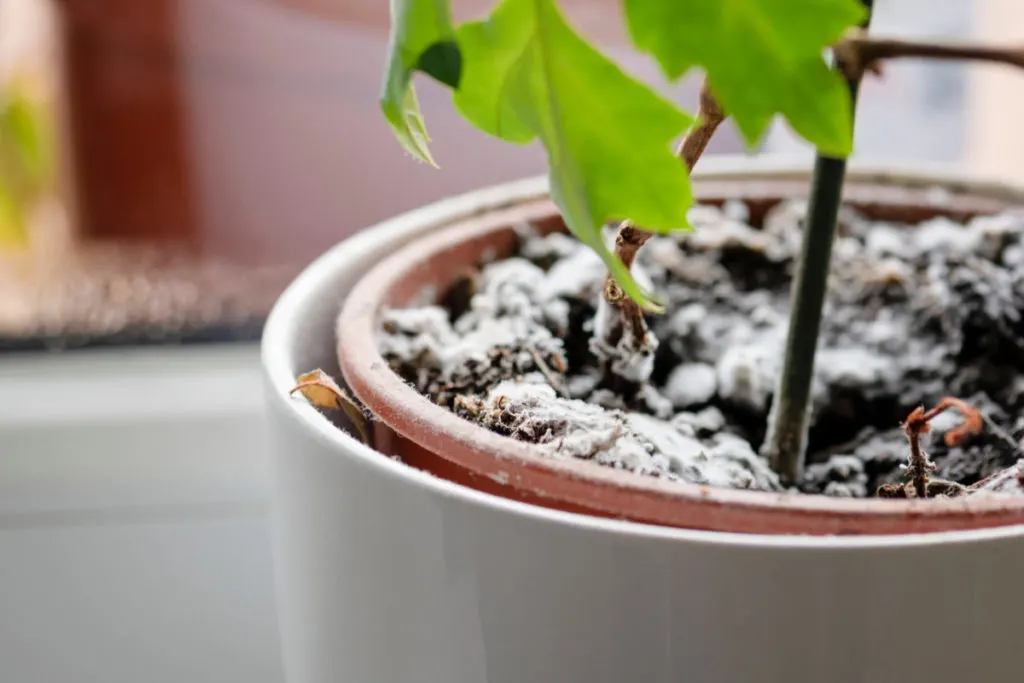
Recently, I found myself in a plant nursery looking over their selection of tropical houseplants. A sales associate approached and asked if she could help me. I told her I was getting tired of owning finicky houseplants. I said I was looking for something that wouldn’t die on me if my water was hard or the air was too dry, or its roots sat in water for too long.
She laughed and told me to get a dog.
I laughed too but realized there was some truth to her suggestion. Caring for houseplants often feels like an uphill battle. If you don’t get everything exactly right, you end up with a sick or dead plant on your hands.
And often, these same species have the nerve to grow well in the most unpredictable climates in the wild.
Go figure.
Today we’re going to talk about a very common plant ailment that often leaves new and experienced houseplant enthusiasts stumped – mold on your soil.
Believe it or not, this is one of the most common diseases you’ll encounter as a houseplant owner. In fact, I’ll bet if you have plants in your home, you probably have at least one that has a furry, dusty white covering of mold growing on the top layer of the soil.
Read on to find out what this mold is, what causes it, how to get rid of it and how to prevent it.
What is this Stuff on My Houseplants?
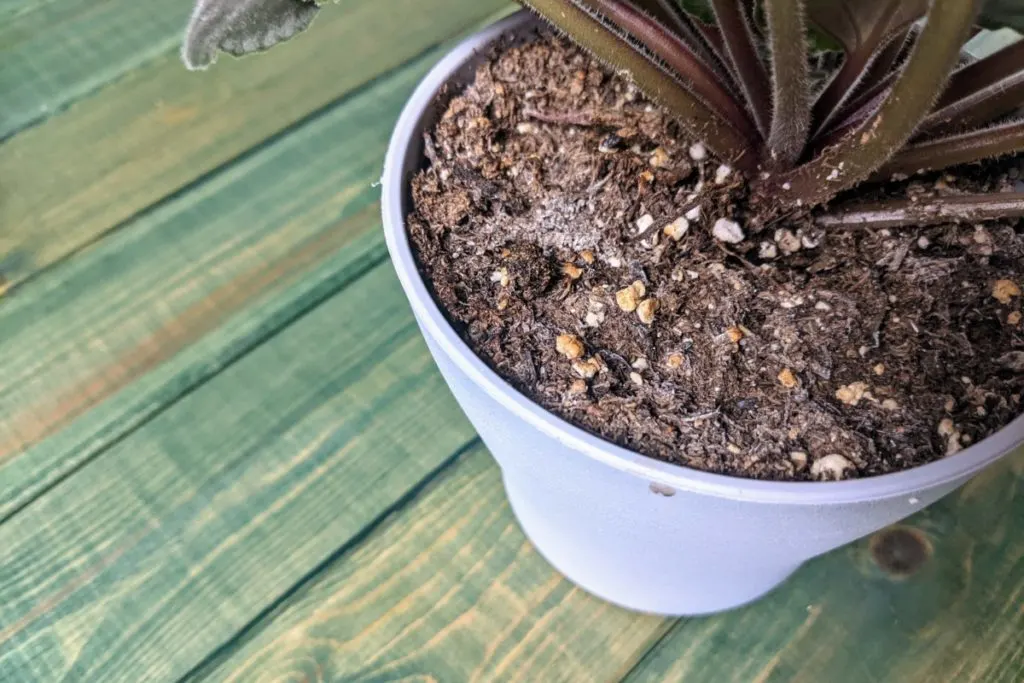
The fuzzy growth of white mold on the soil of your plants is usually a harmless growth of a saprophytic fungus. A saprophyte is an organism that gets its nutrients from decaying organic matter. Mushrooms are a great example.
The appearance of a saprophytic fungus on the top of your soil is completely natural.
But, as it relies on decaying matter, it may also be a sign that something is wrong with your plant. If your plant looks sickly beyond just the white fungus, you’ll need to identify the underlying problem.
However, if your plant looks healthy despite the funky white growth on the soil, this fuzz is generally harmless.
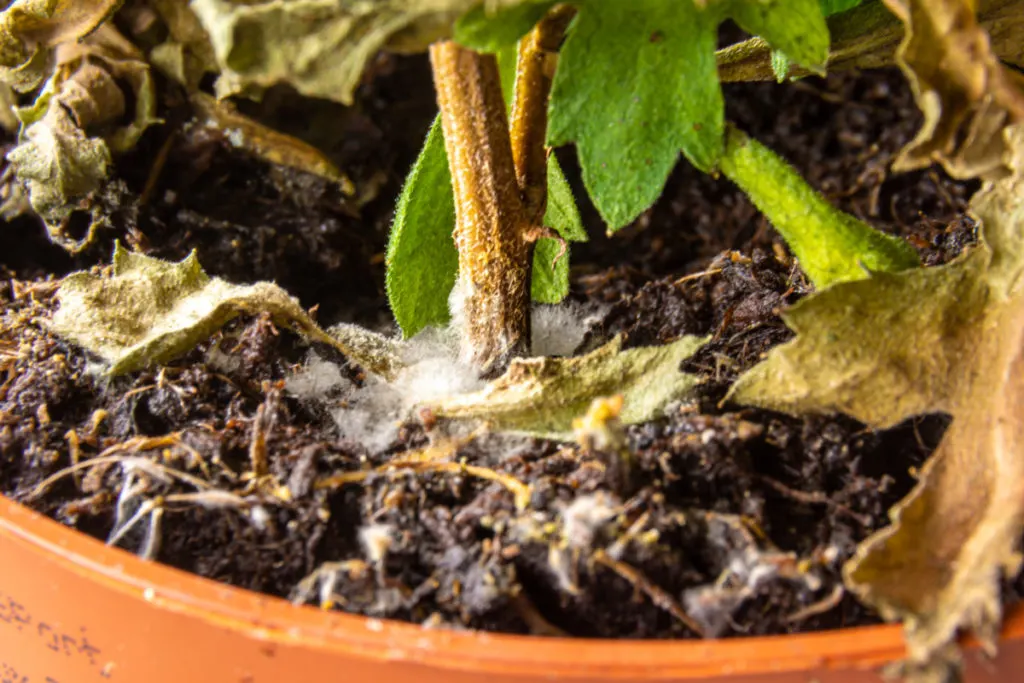
I know the word mold usually gives people pause, but unless you have extreme allergies, the fungus growing on your plants won’t harm you or your pets.
What Causes White Mold?
Moisture
Ah, yes, if you’re dealing with mold on your houseplant, we’re usually responsible for the conditions that cause it. This is especially true for plants grown indoors.
White mold is caused by dampness; this can be both from soggy soil and humid air. Either can cause mold to start growing, and the presence of both can compound the matter.
Poor Lighting
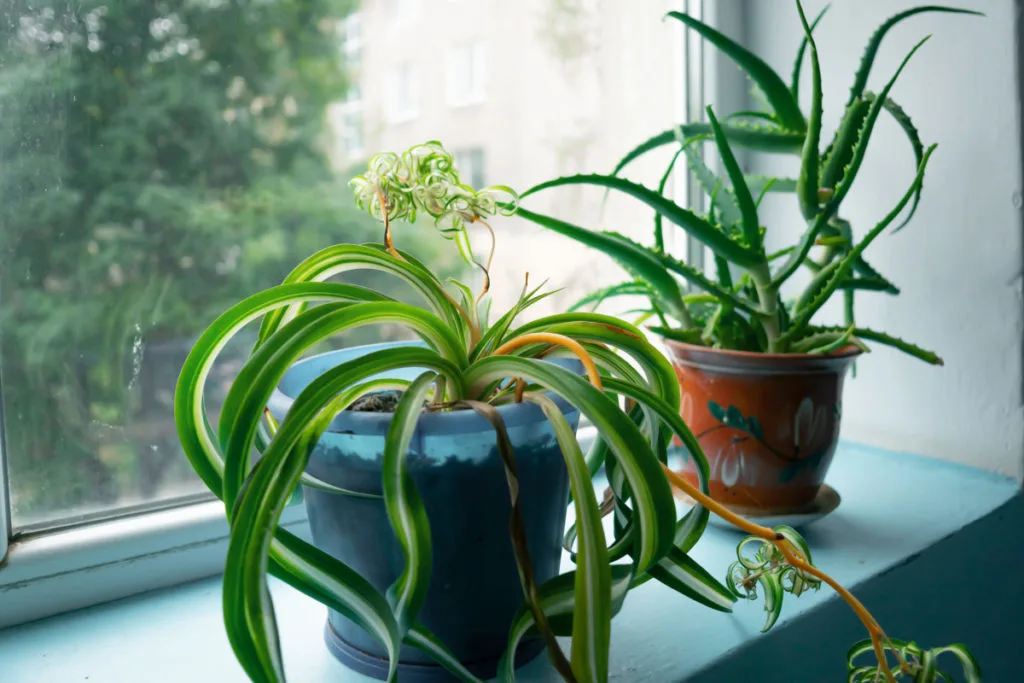
Another culprit that encourages the growth of mold is poor light conditions. All plants have specific sun requirements. If they aren’t getting enough sun, not only will the plant suffer, but the soil won’t dry out. Damp soil that doesn’t get a lot of light creates the perfect growing conditions for white mold.
Poor Air Circulation
Indoor plants don’t benefit from a natural breeze to help keep leaves fresh and dry out the top of the soil. This is especially true in the winter when you have all of your windows and doors closed.
Once you get a mixture of these three conditions, you’re bound to have mold problems.
Getting Rid of Mold on Houseplant Soil
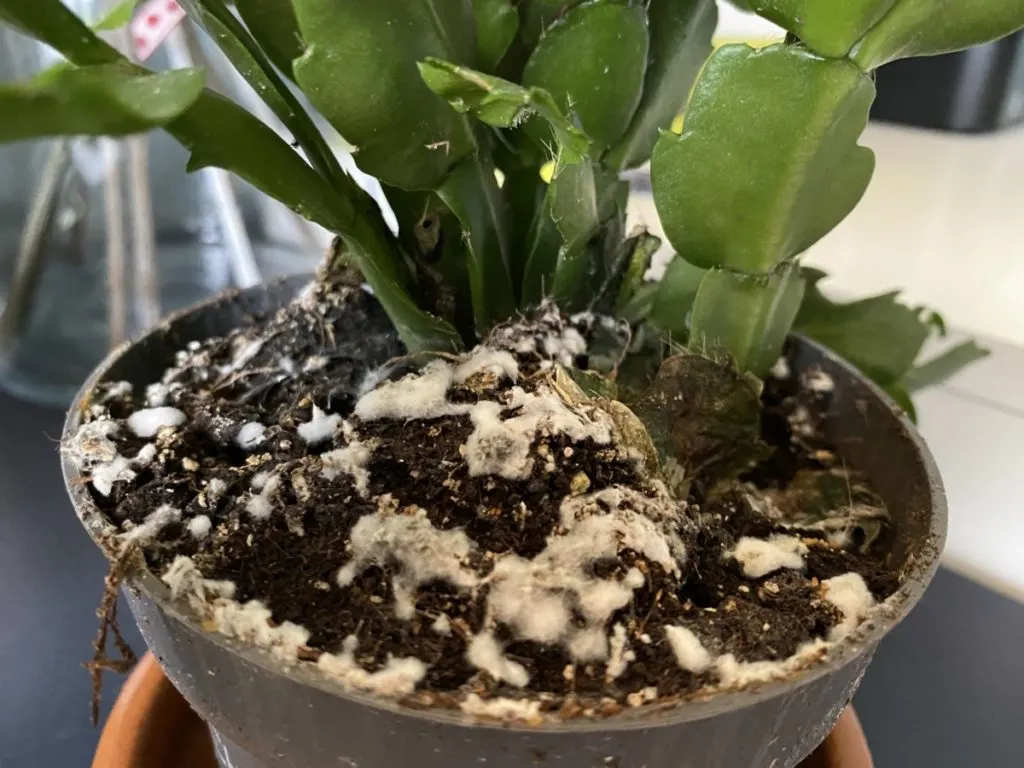
The first thing is first, it’s important to let the soil dry out. Do your best to correct the environmental factors that led to mold growth in the first place.
Manual Removal
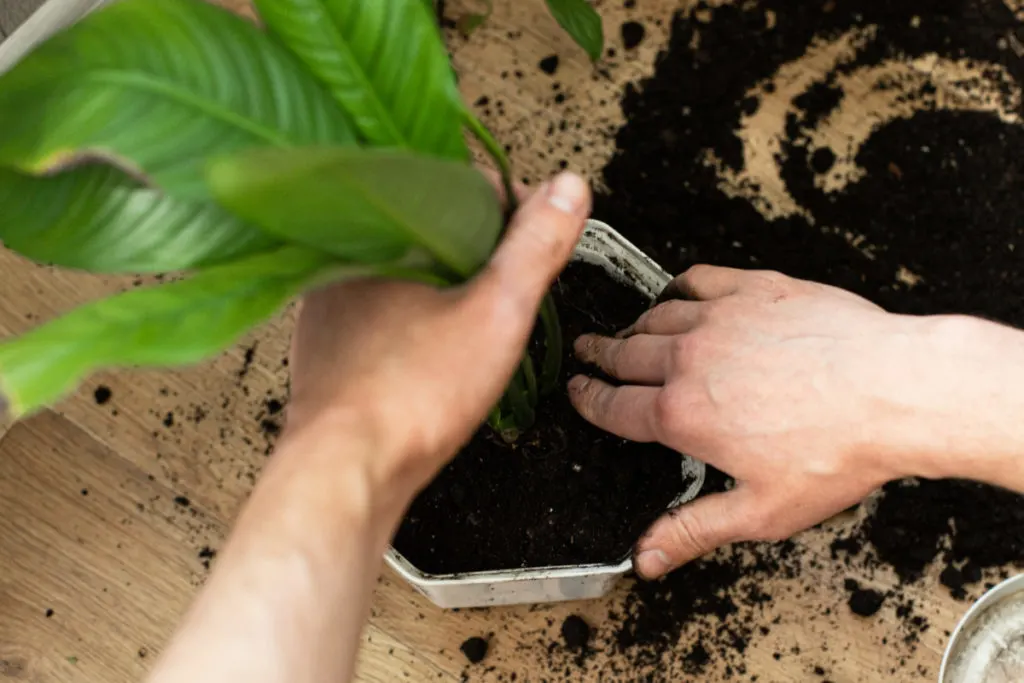
One of the easiest ways to deal with white mold is simply to repot the plant using new potting soil. However, keep in mind that the organisms that caused the mold are probably in the new potting soil too, and if you don’t take care of the environmental issues, you’ll be dealing with mold again at some point.
Cinnamon
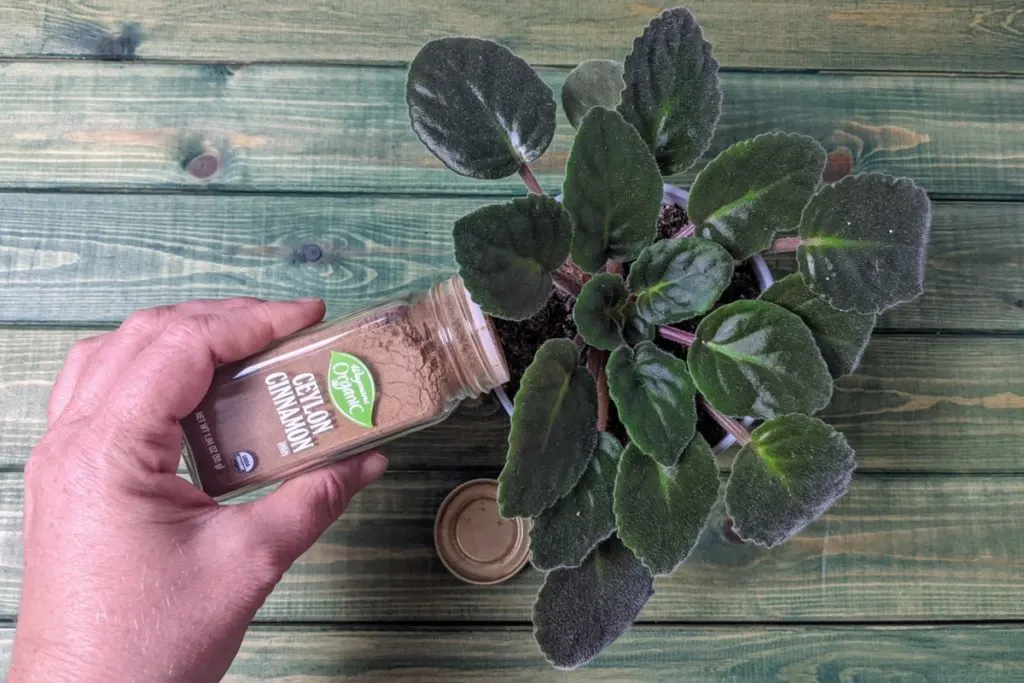
Sprinkle a light layer of cinnamon onto the surface of the soil. Cinnamaldehyde, a chemical compound in cinnamon, is a natural anti-fungal. Using cinnamon is a great, all-natural way to take care of the problem without using chemicals.
Baking Soda Spray
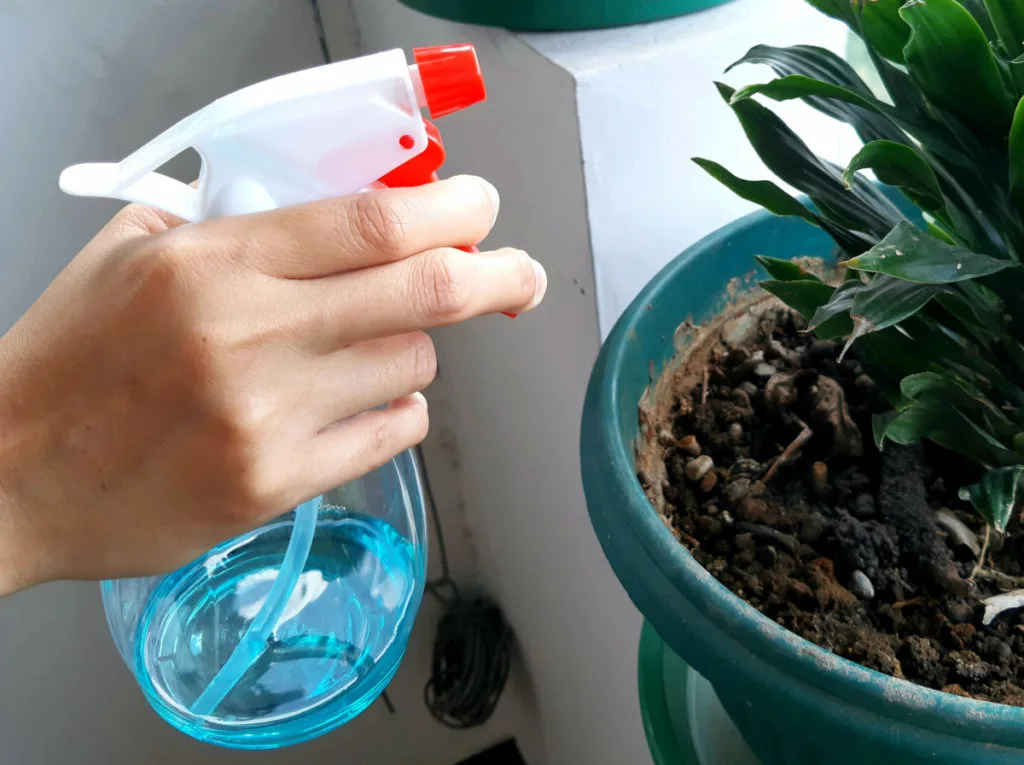
Mix 2 teaspoons of baking soda with 1 liter of water to make a spray that will kill the fungus. The high pH level of baking soda will kill off the white mold.
How to Prevent White Mold Growth
As with nearly all indoor plant diseases, the best way to cure them is to prevent them entirely. And the best way to prevent plant diseases is a good care routine.
Watering
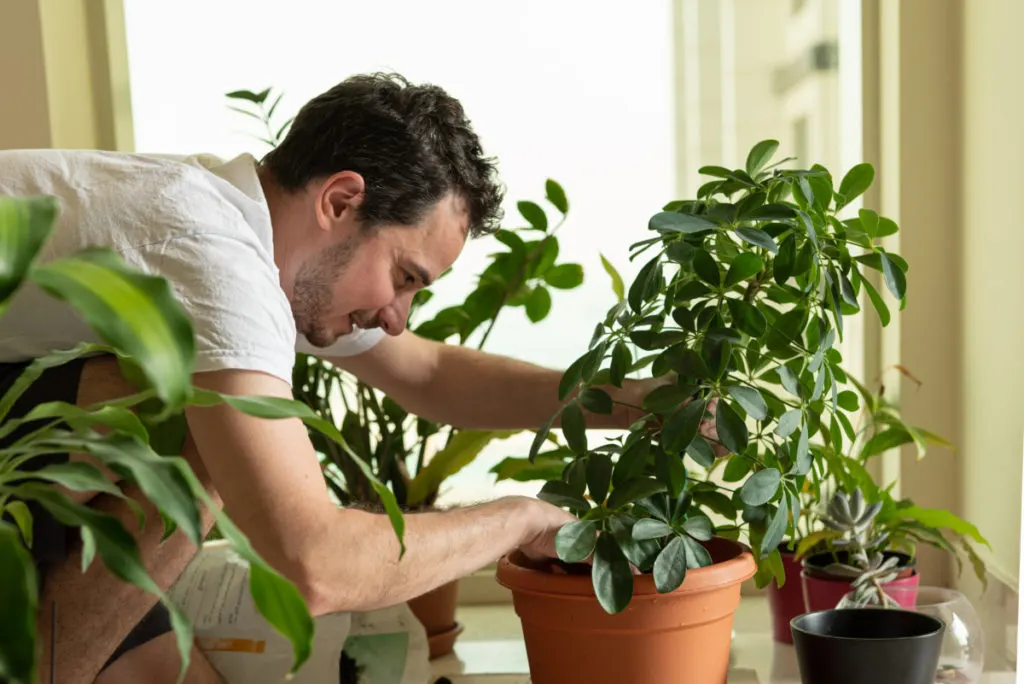
Overwatering invites the growth of mold and fungus in your plants. Avoid indiscriminate watering by sticking your finger into the top inch of the soil. If it’s damp, your plant doesn’t need more water. If the soil is dry in that first inch, go ahead and give your plant a drink.
But remember, even if your plant does need to be watered, you can still overwater. Plants don’t like wet feet and don’t let them sit in standing water. Wait a few minutes after watering your houseplants, then dump any standing water.
A great way to water plants is to bottom feed them.
Setting plants in a bowl of water allows them to soak up water through the bottom drainage hold in the planter, much like the roots would take up water in the wild. This kind of watering keeps the top of the soil dry, which not only prevents fungus and mold but also keeps fungus gnats from becoming a problem.
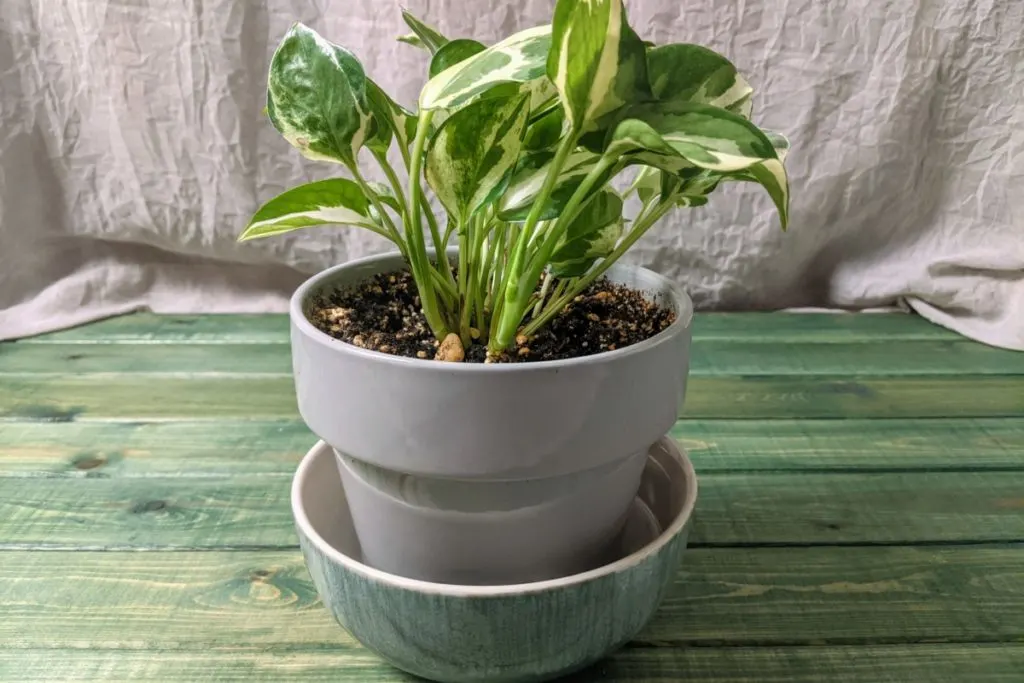
Bottom feeding plants also encourages deep root growth, and as we know, if you want healthy plants up top, it all starts with what goes on below the soil.
Keep the Top of the Soil Clean
Make it a habit to remove any dead leaves or debris that has fallen onto the top of the soil. Left unchecked, this organic matter will start to decay and invite rot and disease.
If your plant is large and bushy, making it difficult to see the soil, this step is especially important. Not only will you have a mess on the top of your soil, but because it’s harder to see, you may not catch it before it turns into a larger problem.
Good Air Circulation
In nature, the wind constantly provides plants with the air circulation needed to dry the soil and leaves out properly. In your home, it’s another matter entirely. When you have the windows open during the warmer months, air circulation isn’t usually a problem.
When things are buttoned up tight in the winter, you’ll need to give your plants a little help. If you have a ceiling fan, keep it running in the winter. Not only will this help your plant, but it will help move hot air, keeping your home warmer.
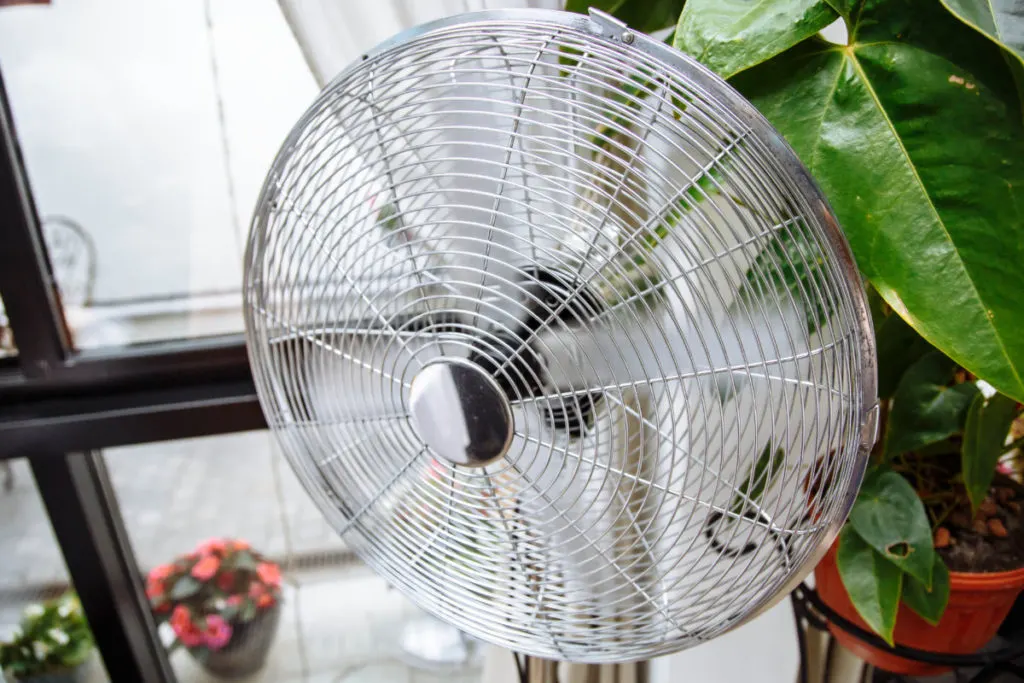
A small oscillating fan can be used if you don’t have a ceiling fan. Move it around your rooms and home throughout the week to stir up the air. Again, both your plants and you will benefit from the movement of air.
Yellow Mold
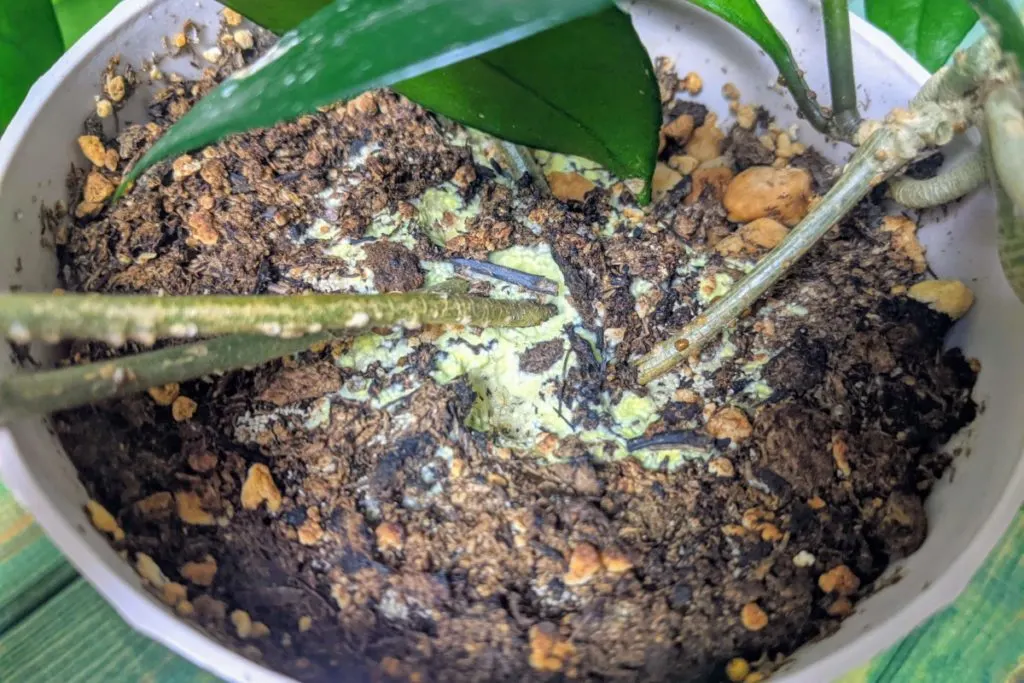
Sometimes you’ll get a real shock and discover a bright to pale yellow mold growing on the top of your plant’s soil.
This creepy-looking growth is actually a slime, not a mold. Its Latin name, Fuligo Septica, is much preferred to its more common moniker – dog vomit slime. Charming!
Despite its alarming appearance, Fuligo septica is harmless, not only to your plant but also to you and your pets.
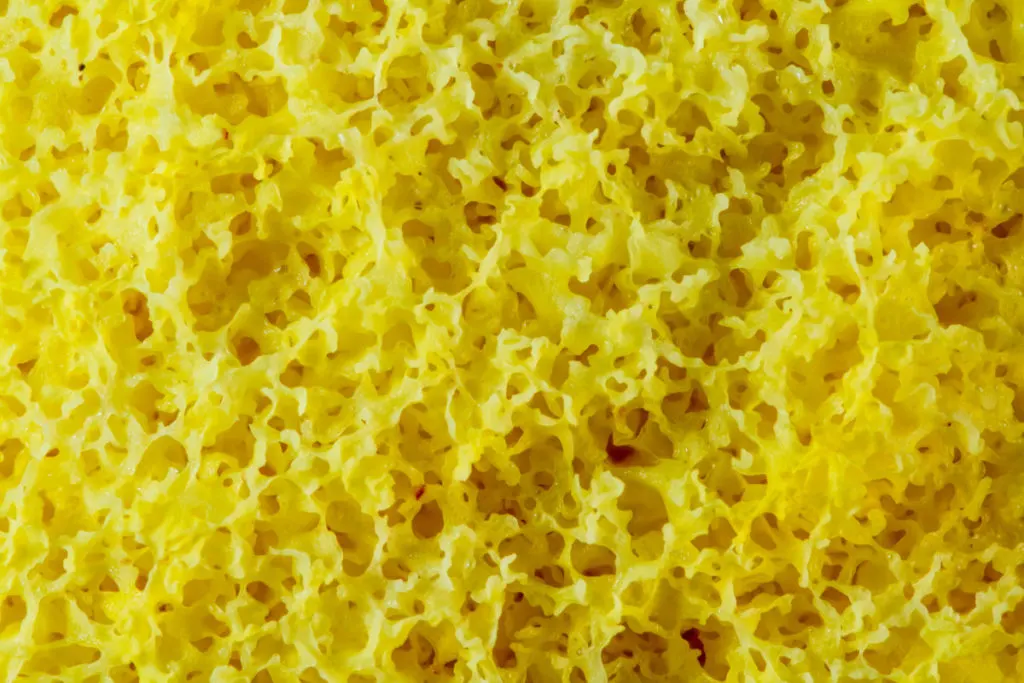
Again, it shows up when the soil is damp, and there’s plenty of humid, stale air.
And that’s that. Moldy soil can be unsightly and give us pause to believe the worst, but as we’ve discovered, this common plant problem rarely has dire effects. And now that you know how to prevent it, it can be a problem of the past.
If you don’t want a dog, but rather you’d like more houseplants, I suggest reading the following:
12 Houseplant Mistakes Almost Everyone Makes
9 Low Maintenance Houseplants For The Busy Green Thumb
3 Easy Ways To Propagate Succulents From Leaf, Stem Or Branch Cuttings

Get the famous Rural Sprout newsletter delivered to your inbox.
Including Sunday musings from our editor, Tracey, as well as “What’s Up Wednesday” our roundup of what’s in season and new article updates and alerts.

